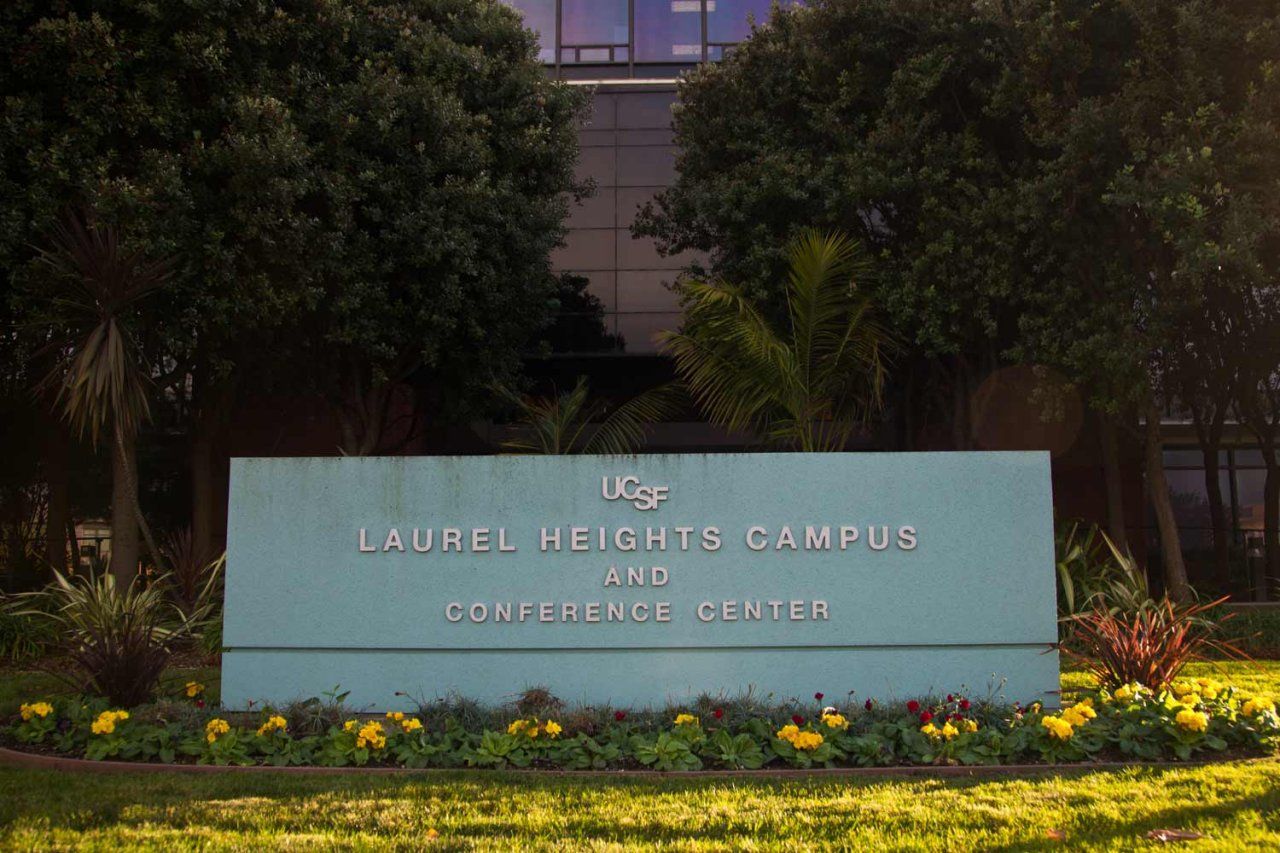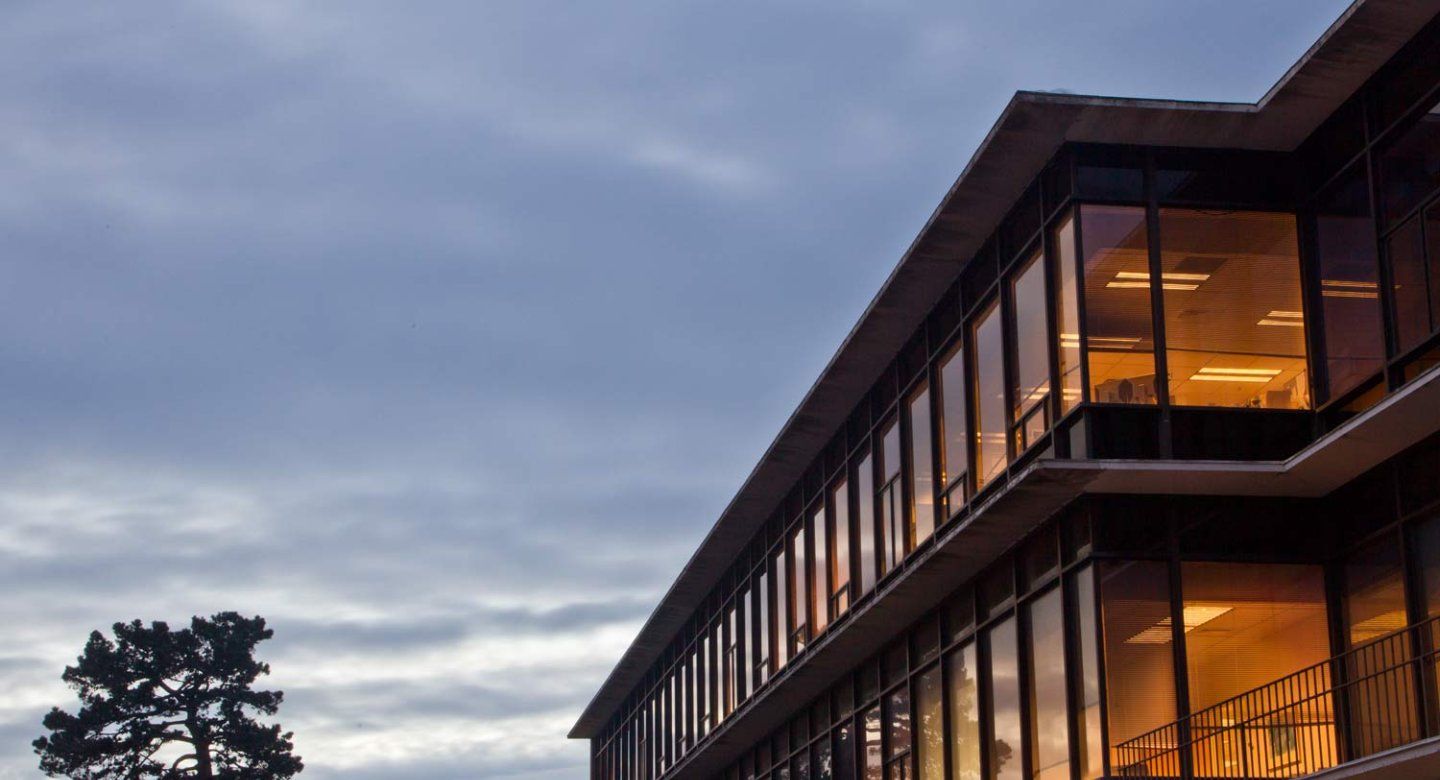UCSF’s long-time presence in San Francisco’s Laurel Heights neighborhood has come to an end.
UCSF purchased the 10.3-acre property at 3333 California St. in 1985 and began operations there in the late 1980s. About 1,200 employees from multiple academic and administrative departments worked in the four-story midcentury modern office building with glass walls.
“There was a strong sense of community there,” said Kevin Beauchamp, executive director of Physical Planning at UCSF, who worked there from 1999 to 2010.
Most recently, UCSF’s Laurel Heights was a center for COVID-19 vaccinations and testing, one of several sites that UCSF established to serve employees and the public during the pandemic. From November 2021 through March 2023, UCSF staff stationed at the site administered an estimated 70,000 vaccinations for COVID-19, MPOX and the flu. Since faculty and staff already started moving to other UCSF locations, Laurel Heights was an ideal place to offer a convenient drive-through option in the mostly empty parking lot.
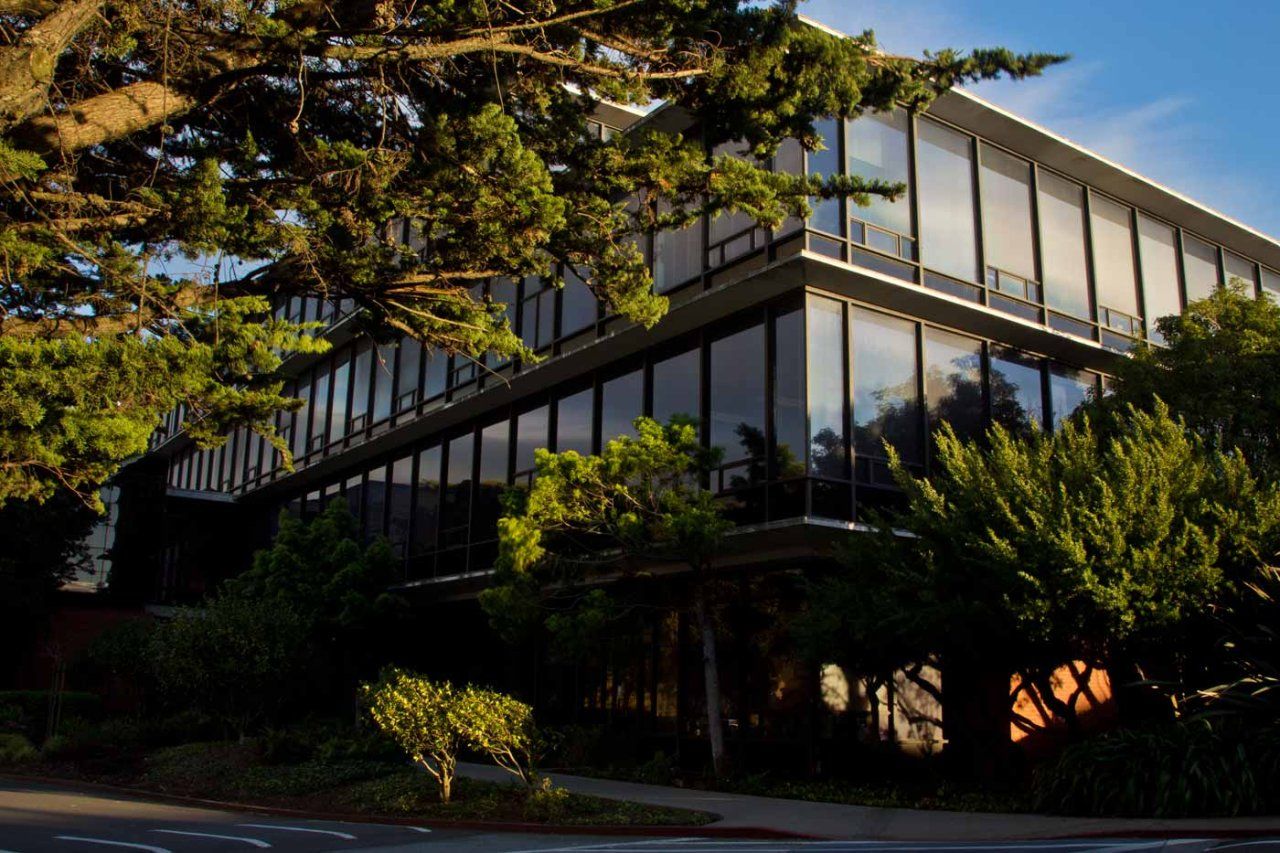
Pioneering Health Disparities Research
Faculty headquartered at Laurel Heights brought research on health disparities of marginalized communities and the effects of socioeconomic status and racism on health to the forefront in academic medicine across the nation and at UCSF.
Among the nationally recognized scholars working at Laurel Heights was Nancy Adler, PhD, a professor of psychiatry who published landmark papers in JAMA and American Psychologists demonstrating that socioeconomic status was linked to health across a whole range of factors, challenging common explanations for health disparities at the time.
Paula Braveman, MD, another internationally renowned researcher, conducted groundbreaking research on the impacts of health equity, health disparities, racism, and other determinants of health, particularly as they affected maternal and child health outcomes.
Both Adler and Braveman and their colleagues significantly advanced the field of health disparities by making important contributions to measuring, documenting, understanding, and addressing socioeconomic and racial/ethnic disparities.
That work “has helped us better understand the patients we serve, social determinants of health, and ways to assure that our health system is a learning community, where health services research can help to improve the delivery of care, as well as deal with fundamental contextual and historical issues that shape health,” said Claire Brindis, DrPH, distinguished professor and emerita director of the Philip R. Lee Institute for Health Policy Studies.
For her part Brindis, who co-founded the Bixby Center for Global Reproductive Health, focused on reproductive health research and policy, and she and Charles Irwin, MD, spearheaded two other centers that address national policy related to adolescent and young adult health: the National Adolescent Health Information Center and the Adolescent and Young Adult Health Resource Center.
Sweeping Views of San Francisco
Built as the main campus for the Fireman’s Fund Insurance Company between 1955 and 1966 on the site of the former Laurel Hill Cemetery, the facility was bounded by California Street to the north, Presidio and Masonic avenues to the east, Euclid Avenue to the south, and Laurel Street to the west.
“What made it special was that it was a fantastic location with amazing views of the city,” Beauchamp said. “The way the building is situated, you get these sweeping views of downtown.”
Beauchamp worked at Laurel Heights when the UCSF Campus Planning department was one of several administrative departments located in the 363,000-square-foot facility. The building was surrounded by the quaint Laurel Heights neighborhood in central San Francisco, one that welcomed UCSF employees over the years at cafes, retail shops and coffee houses.
“I loved the neighborhood and the views of the city and Golden Gate Bridge,” said Lisa Cisneros, an executive director in the Office of Communications. She joined the Public Affairs department in 1994 working in a first-floor office at Laurel Heights until the pandemic began in March 2020. The communications office moved to Mission Bay in late 2020.
To build community and combat the somewhat “siloed” setup at Laurel Heights, events drew people together at Faculty Development Day, staff appreciation events and quarterly information exchanges with faculty and trainees. Members of the UCSF community also met at the small café or in the garden and convened in the building’s auditorium to share the most up-to-date research findings in health disparities.
The UC Board of Regents also regularly met in the auditorium at Laurel Heights.
During one memorable meeting in 1996, Cisneros, a staff writer for the campus newspaper at the time, recalled the Regents discussing the affirmative action measure known as Proposition 209. The referendum, due on the statewide ballot that November, sought to ban the use of racial and gender preferences in state government programs, including admissions decisions at state colleges and universities.
“Inside the packed Laurel Heights auditorium, I heard arguments for and against affirmative action,” said Cisneros. “Outside the building, the Rev. Jesse Jackson led a rally to protest the ballot measure during a week-long trek that ended in Sacramento.”
The proposition passed by a 10-point margin later that year and has withstood several legal challenges ever since. “Despite the outcome, I was proud that UCSF leaders took a stand to help address systemic and perpetual inequities in public education,” she added.
Lighting up the Neighborhood
Among the defining features of the Laurel Heights campus was the neighborhood’s de facto Christmas tree hoisted on its rooftop each year. The 40-foot tree made up of thousands of lights was part of a tradition started by the Fireman’s Fund Insurance Company and continued by UCSF.
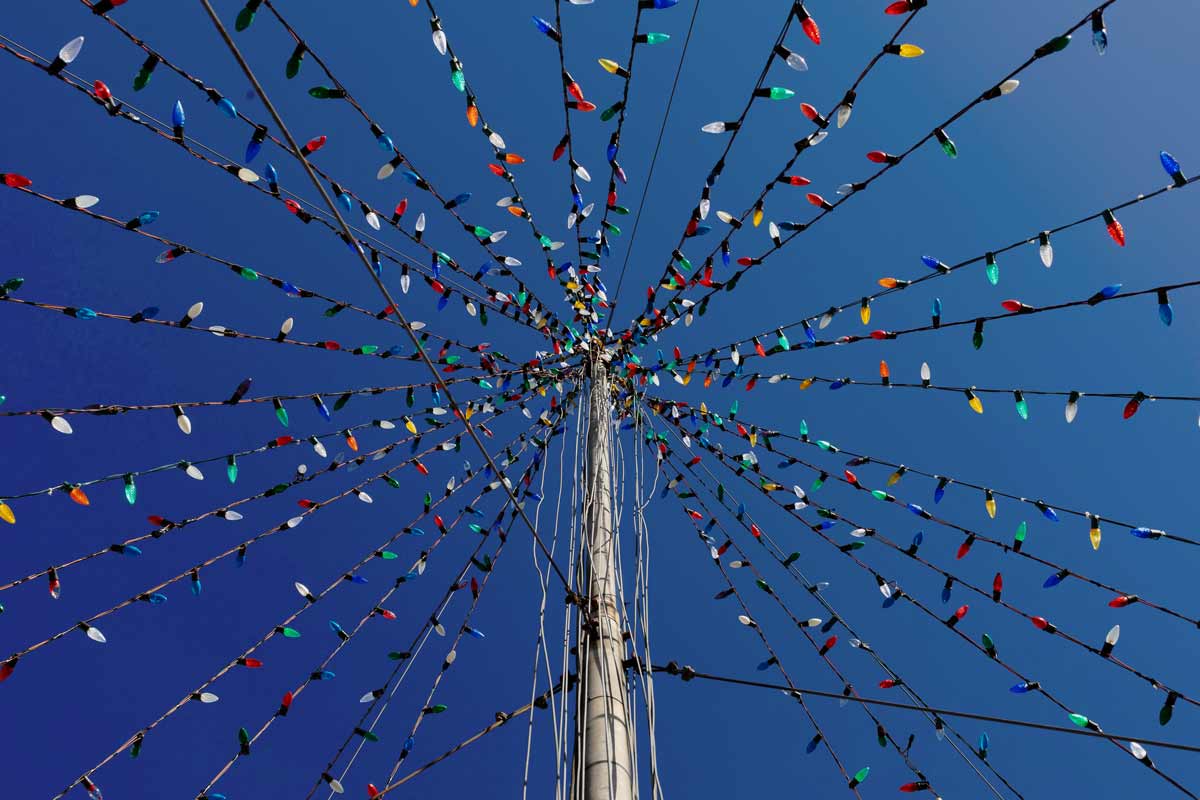
“It was just strings of lights and a star,” Beauchamp said. “It wasn’t really an elaborate tree.”
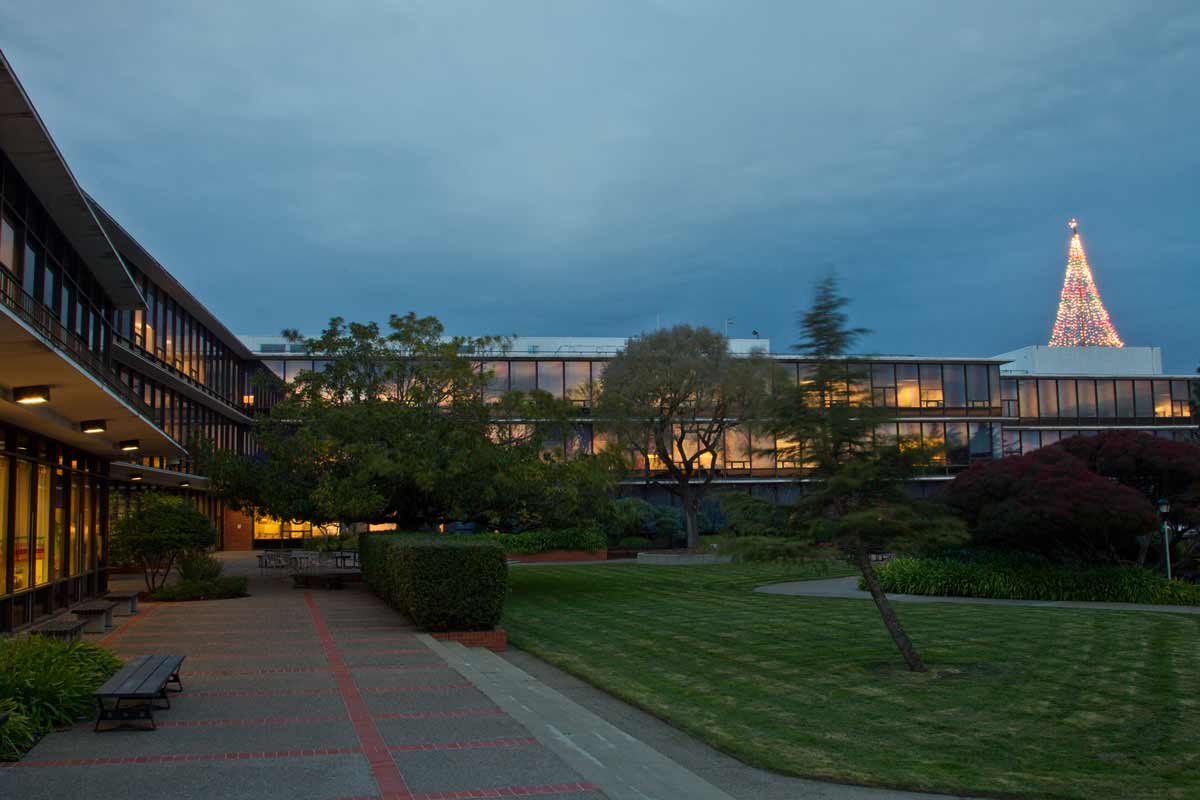
“But because of the location of the building on the skyline, it was visible in many, many places. It was a kind of Christmas icon of the neighborhood.”
The tree – supported by a metal pole and lit annually between Thanksgiving and New Year’s – was illuminated for the last time in 2022.
Halloween at Laurel Heights featured elaborate door decorating and costume contests, as well as costumed children from the Laurel Heights Child Care Center trick or treating in the neighborhood. Opened in February 1999 and often operating at capacity, the childcare center served children of faculty and staff as well as neighbors. It’s estimated that roughly 2,400 infants, toddlers and pre-K children came through its doors, said former director Nathalie Larsen.
“It was a very special childcare center that had a sense of community and inclusiveness over the years,” said Larsen, now the Director of Family Services at UCSF. “I think that came from a place of supporting and nurturing the children that were present and the diversity of the families that attended.”
Moving to Mission Bay
UCSF’s Laurel Heights facility also was known for its collection of art, one steered by a staff-led committee that involved Beauchamp and Cisneros. “There was a pretty phenomenal collection of stuff,” Beauchamp said of the works, which included mostly wall art and some commissioned pieces. Notably, Bay Area artist Rebeca Bollinger’s “Permanent Slide Show” compiled from more 10,000 images of campus life and objects was displayed in the Laurel Heights campus lobby. An antique collection of pharmacy tools and equipment were also showcased in the lobby.
Most of the art has been moved to UCSF’s Mission Bay campus. “It’s almost like seeing an old friend in a new setting,” Beauchamp said.
As is often the case, one door opens when another closes.
For Beauchamp, that rings true as plans for developing the Mission Bay campus were crafted inside the Laurel Heights office. “All of the initial planning work for the campus and the creation of the Mission Bay master plan happened at Laurel Heights,” he said of the years-long project.
That’s true too for the landmark deal struck by his former boss Bruce Spaulding, then senior vice chancellor of University Advancement and Planning, who negotiated with then San Francisco Mayor Willie Brown and the late real estate developer Nelson Rising to establish UCSF’s Mission Bay campus.
Many of the employees housed at Laurel Heights moved to Mission Bay as more buildings opened and were ready for business. UCSF started the process of re-locating employees to other campuses and seeking a developer to create a vision for the future of Laurel Heights as far back as a decade ago to reduce long-term occupancy costs.
“Fortunately, many of the research centers, faculty, staff and trainees also have been moved into Mission Bay, as greater recognition of the critical role of social and behavioral sciences and studies in equity and social determinants of health have been embraced throughout UCSF’s efforts,” Brindis said.
The Laurel Heights campus is slated to become a 1 million square foot mixed-use village that includes retail space, a childcare center and 744 residential units, some of which will be set aside for low-income seniors. The project is in the pre-development phase.
